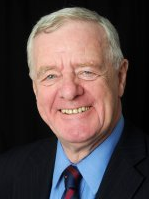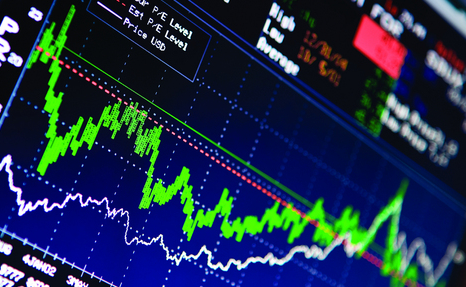Nyheter
David Hargreaves on Precious Metals week 17 2012
 The mood of the market is softening but much serious thought is being given to the role of gold and its price and demand direction. The superficial analytical froth is being blown of the top of the glass and reality is setting in. We know the numbers: how much there is, how much is newly produced and who are the traditional buyers. So what we are really debating is what is the place of the metal in the future. Is it a store of long term value? Does it have a role in the monetary system? Or is it the sponge which soaks up the fear factor? The upshot is this: what will be the price extremes and what will be their time spans? The role of gold will affect its long term price profile but hardly its rate of new production. It is because the price direction is so uncertain that major new sources will be difficult both to find and to fund. The same cannot be said of platinum because of its tight geographical supply and its industrial applications. And silver? Its value of newly mined production is about one-sixth that of gold but its volume about fifty times. Arguably it could do some catching up.
The mood of the market is softening but much serious thought is being given to the role of gold and its price and demand direction. The superficial analytical froth is being blown of the top of the glass and reality is setting in. We know the numbers: how much there is, how much is newly produced and who are the traditional buyers. So what we are really debating is what is the place of the metal in the future. Is it a store of long term value? Does it have a role in the monetary system? Or is it the sponge which soaks up the fear factor? The upshot is this: what will be the price extremes and what will be their time spans? The role of gold will affect its long term price profile but hardly its rate of new production. It is because the price direction is so uncertain that major new sources will be difficult both to find and to fund. The same cannot be said of platinum because of its tight geographical supply and its industrial applications. And silver? Its value of newly mined production is about one-sixth that of gold but its volume about fifty times. Arguably it could do some catching up.
Surplus stocks are infinitely larger and it has some industrial uses. So poor relation it looks destined to remain.
So whither gold? A busy man of late, Ross Norman, CEO of major London bullion dealers Sharps Pixley, spoke at both the European Gold Forum and Mining Journal’s Gold Day last week. His historic analysis alone was worth the attendance but a summary of his findings was telling. Gold is not in a bubble. Fundamental changes in the monetary markets are seeing to that. The metal’s 17% annual compound increase over the past 12 years has formed a solid base. Investment demand is the key with eastern markets making it much easier for individuals to buy compared with their western counterparts. Don’t be surprised at $3000/oz somewhere down the line.
GFMS does not greatly diverge from this view, but notes that a strong dollar has a negative influence on gold, as now. The dollar strength, of course, has two supports:
- The Eurozone problems continue
- The US is tackling its energy problem.
Yet, every view deserves a hearing:
Silver: The Silver Institute tells us supply fell by 34 Moz to 1040 Moz in 2011. This prompts GFMS to say the price will fluctuate between $28.70 and £32.90/oz in Q2 but watch for a decisive breakout by year end and $40/oz, here we come
Gold: Australia’s Westpac Bank says the bull run is over so look for A$1500/oz (US$1450) by 2014. Meanwhile, GFMS looks for gold to be “well south of $1000/oz in the not too distant future”. Bloomberg says ‘leading analysts’ are going for $1900/oz in Q4. Help!
[hr]
About David Hargreaves
David Hargreaves is a mining engineer with over forty years of senior experience in the industry. After qualifying in coal mining he worked in the iron ore mines of Quebec and Northwest Ontario before diversifying into other bulk minerals including bauxite. He was Head of Research for stockbrokers James Capel in London from 1974 to 1977 and voted Mining Analyst of the year on three successive occasions.
Since forming his own metals broking and research company in 1977, he has successfully promoted and been a director of several public companies. He currently writes “The Week in Mining”, an incisive review of world mining events, for stockbrokers WH Ireland. David’s research pays particular attention to steel via the iron ore and coal supply industries. He is a Chartered Mining Engineer, Fellow of the Geological Society and the Institute of Mining, Minerals and Materials, and a Member of the Royal Institution. His textbook, “The World Index of Resources and Population” accurately predicted the exponential rise in demand for steel industry products.
Nyheter
Jonas Lindvall är tillbaka med ett nytt oljebolag, Perthro, som ska börsnoteras

Jonas Lindvall, ett välkänt namn i den svenska olje- och gasindustrin, är tillbaka med ett nytt företag – Perthro AB – som nu förbereds för notering i Stockholm. Med över 35 års erfarenhet från bolag som Lundin Oil, Shell och Talisman Energy, och som medgrundare till energibolag som Tethys Oil och Maha Energy, är Lindvall redo att än en gång bygga ett bolag från grunden.
Tillsammans med Andres Modarelli har han startat Perthro med ambitionen att bli en långsiktigt hållbar och kostnadseffektiv producent inom upstream-sektorn – alltså själva oljeutvinningen. Deras timing är strategisk. Med ett inflationsjusterat oljepris som enligt Lindvall är lägre än på 1970-talet, men med fortsatt växande efterfrågan globalt, ser de stora möjligheter att förvärva tillgångar till attraktiva priser.
Perthro har redan säkrat bevisade oljereserver i Alberta, Kanada – en region med rik oljehistoria. Bolaget tittar även på ytterligare projekt i Oman och Brasilien, där Lindvall har tidigare erfarenhet. Enligt honom är marknadsförutsättningarna idealiska: världens efterfrågan på olja ökar, medan utbudet inte hänger med. Produktionen från befintliga oljefält minskar med cirka fem procent per år, samtidigt som de största oljebolagen har svårt att ersätta de reserver som produceras.
”Det här skapar en öppning för nya aktörer som kan agera snabbare, tänka långsiktigt och agera med kapitaldisciplin”, säger Lindvall.
Perthro vill fylla det växande gapet på marknaden – med fokus på hållbar tillväxt, hög avkastning och effektiv produktion. Med Lindvalls meritlista och branschkunskap hoppas bolaget nu kunna bli nästa svenska oljebolag att sätta avtryck på världskartan – och på börsen.
Nyheter
Oljan, guldet och marknadens oroande tystnad

Oljepriset är åter i fokus på grund av kriget i Mellanöstern. Är marknadens tystnad om de stora riskerna, det som vi egentligen verkligen bör oroa oss för? Och varför funderar Tyskland på att plocka hem sin guldreserv från New York? I veckans avsnitt av Världsekonomin pratar Katrine Kielos och Henrik Mitelman om olja, tystnad och guld. Europa är ju mer beroende av oljepriset än USA, hur orolig ska man vara för att det stiger? En krönika i Financial Times lyfte nyligen “marknadens oroande tystnad”, den syftade på skillnaden mellan den dystra geopolitiska utvecklingen i världen och en marknad som samtidigt återhämtat sig 20 procent sen början av april, trots tullkriget. Vad säger marknadens tystnad egentligen? I Tyskland pågår en debatt om att plocka hem sin guldreserv från USA. Handlar det om bristande förtroende för Donald Trump – och kan det rentav ha något med “hämndskatten” att göra?
Nyheter
Domstolen ger klartecken till Lappland Guldprospektering

Mark- och miljödomstolen har idag meddelat dom i målet om Stortjärnhobbens bearbetningskoncession. Beslutet innebär att Lappland Guldprospektering får tillträde till området – ett avgörande steg mot framtida gruvbrytning i regionen.
Bearbetningskoncessionen för Stortjärnhobben är en central del i Lappland Guldprospekterings långsiktiga satsning på hållbar gruvutveckling i området. Projektet har varit föremål för juridisk prövning och dagens dom ger nu tydlighet kring markanvändningen.
”Vi är mycket nöjda över beslutet och ser nu fram emot att kunna lägga i nästa växel vad gäller utvecklingen av Stortjärnhobbens guldprojekt. Domstolens beslut är ett synnerligen viktigt steg och ger oss nu rätten att nyttja och förfoga över området”, säger VD Fredrik Johansson.
-

 Nyheter3 veckor sedan
Nyheter3 veckor sedanStor uppsida i Lappland Guldprospekterings aktie enligt analys
-

 Nyheter4 veckor sedan
Nyheter4 veckor sedanBrookfield ska bygga ett AI-datacenter på hela 750 MW i Strängnäs
-

 Nyheter4 veckor sedan
Nyheter4 veckor sedanSommaren inleds med sol och varierande elpriser
-

 Nyheter4 veckor sedan
Nyheter4 veckor sedanOPEC+ ökar oljeproduktionen trots fallande priser
-

 Nyheter3 veckor sedan
Nyheter3 veckor sedanSilverpriset släpar efter guldets utveckling, har mer uppsida
-

 Analys4 veckor sedan
Analys4 veckor sedanBrent needs to fall to USD 58/b to make cheating unprofitable for Kazakhstan
-

 Nyheter4 veckor sedan
Nyheter4 veckor sedanTradingfirman XTX Markets bygger datacenter i finska Kajana för 1 miljard euro
-

 Nyheter2 veckor sedan
Nyheter2 veckor sedanUppgången i oljepriset planade ut under helgen













